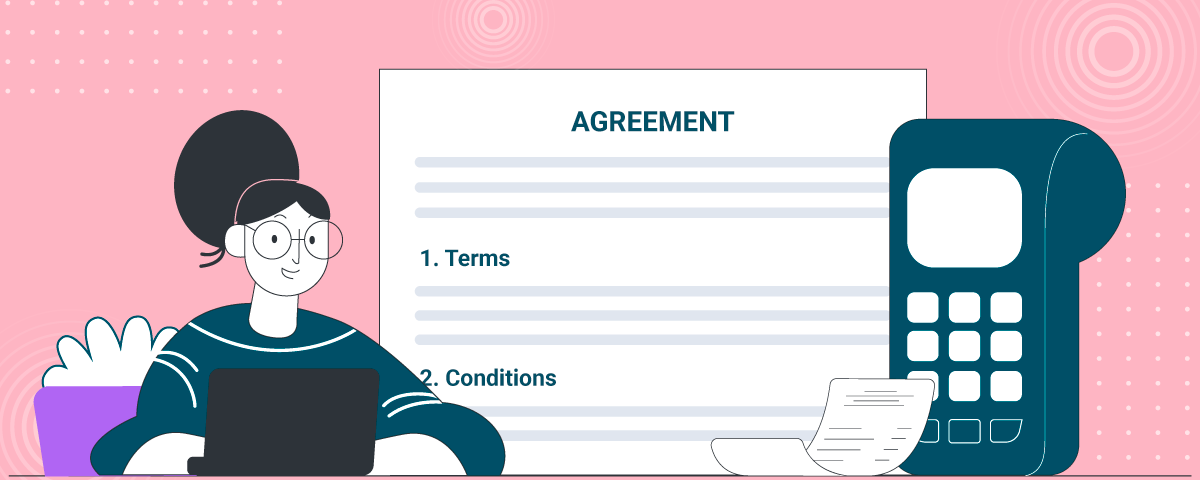Making and fulfilling commitments is a crucial aspect of every business. A Purchase Agreement is one such commitment that ratifies the obligations between a buyer and a seller. It protects the interest of both parties and prevents them from breaching the agreed terms. Usually, the seller agrees to provide a set of products at a stipulated price on a specific date, while the purchaser accepts to meet the financial obligations.
The meet and greet
Gwen Jones, 30, is a Purchase Manager at a reputed designer store. She specializes in sourcing high-end fashion fabrics for luxury apparel. Being a competent negotiator, she manages to get the best price from suppliers to save thousands of dollars for her company.
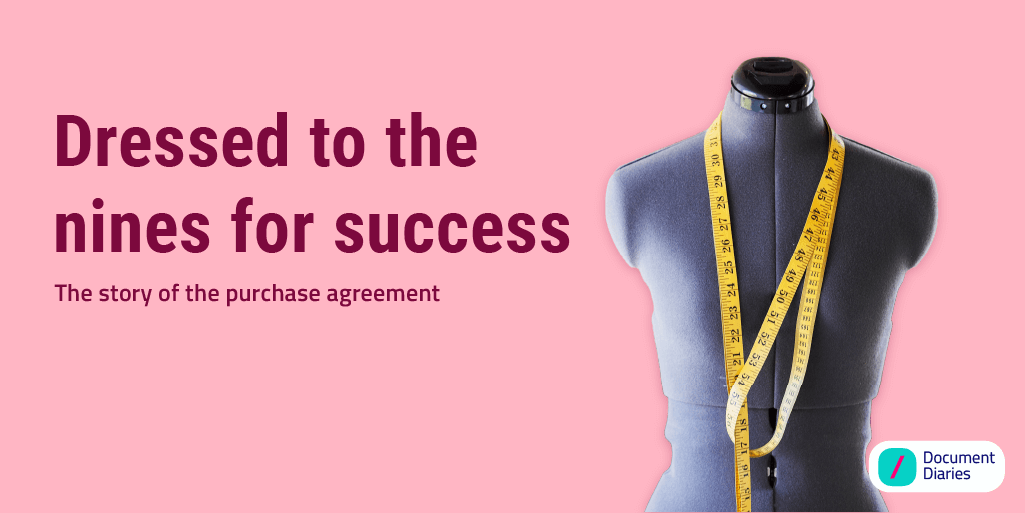
With a focus on minimizing the cost, quality, and delivery-related risks, she always works out exclusive terms and conditions with the sellers for every bulk purchase. However, she struggles to keep track of these terms and bargained prices that vary with every purchase.
Ms. Jones follows a routine where she searches for raw material for luxury goods based on the latest trends. Next, she identifies their suppliers and OEMs and connects with them for negotiations. She has to ensure the raw material is procured on time. Stretching the process too long gives the couturiers very little time to execute their GTM plans.
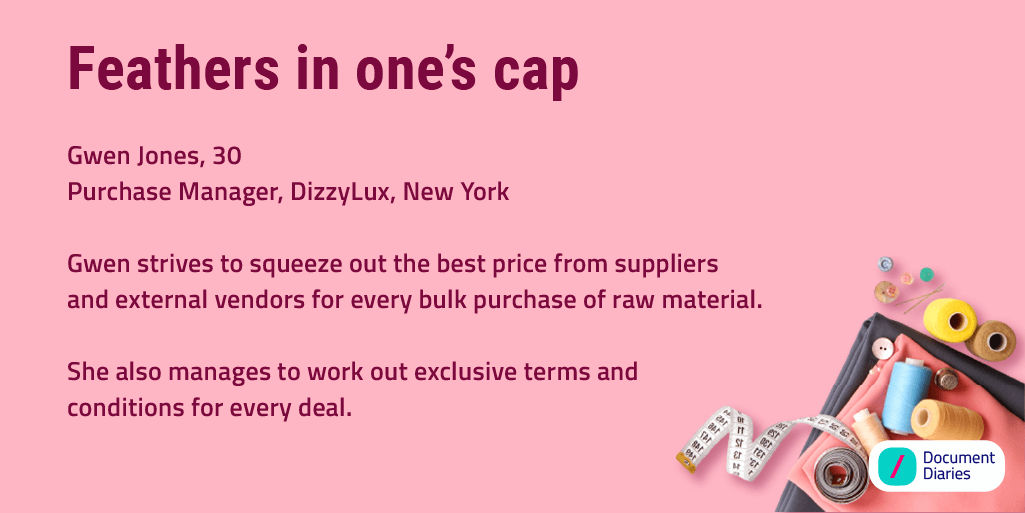
What are the major purchase-related challenges?
Contracts are central to the buyer-supplier relationship, and businesses that manage this well tend to flourish
SAP Procurement Solutions President Chris Haydon
Once she gets the ideal bargain for the bulk purchase, she focuses on getting the proper documentation in place. Having the agreements ready for reviews and approvals is an essential part of her work routine.
What are the key documents involved in procurement?
Ms. Jones is an expert in timing her purchases and makes a special effort to prepare the procurement documents on time. While there are as many as 10 essential documents associated with the procurement process, she emphasizes on the purchase agreement.
What is a purchase agreement, and why is it necessary?
A purchase agreement is a contract that sets forth the terms and conditions related to an elaborate procurement exercise. It typically involves the transfer of expensive goods or property and is legally binding on both the purchaser and seller. It is mostly preferred for complex transactions, whereas you can use a bill of sale or receipt for simpler transactions.
For instance, if you are buying a single chair, a receipt will be sufficient. However, when purchasing several chairs and tables along with numerous other pieces of furniture, which will be delivered and paid for over a period of time, then a purchase agreement is an appropriate choice.
What is the difference between the purchase agreement and the purchase order?
A purchase agreement is usually confused with a purchase order. A purchase order is an offer to purchase goods, whereas the agreement is the commitment to make the purchase. However, a purchase agreement often starts as a purchase order. Only when the seller accepts the order, it turns into a binding contract, and the included clauses, terms, and conditions give it its legal weightage.
What are the different types of purchase agreements?
The two main categories of Purchase agreements include 1) Blanket Purchase Agreement (BPA) and 2) Indefinite Quantity/Indefinite Delivery (IQID)
While both are commonly used, choosing the one that fits best depends on whether the procurement exercise is more concerned with money or time frame. It can also depend on the type of suppliers, who can either be high volume or high frequency, depending on your project.
What are the challenges in drafting a purchase agreement?
- Protecting the company’s interest: As a purchaser, you need to cover the risks associated with the cost of goods you’re trying to procure. You should ensure the frequency of supplies remains unaffected irrespective of rising cost and include the appropriate clauses.
- Conditions on examinations of the goods: Suppliers might try to make up for the price-hike by decreasing the goods’ quality. You can discourage this by getting the appropriate terms and conditions in place. Not being able to address the variations in quality can have a huge impact on your entire supply chain.
- Arrangements for the surge in taxes and other expenses: It’s important to have provisions in the agreement that prorate for taxes or other expenses. Laying out clearly who is responsible for them will help avoid unwanted confusion.
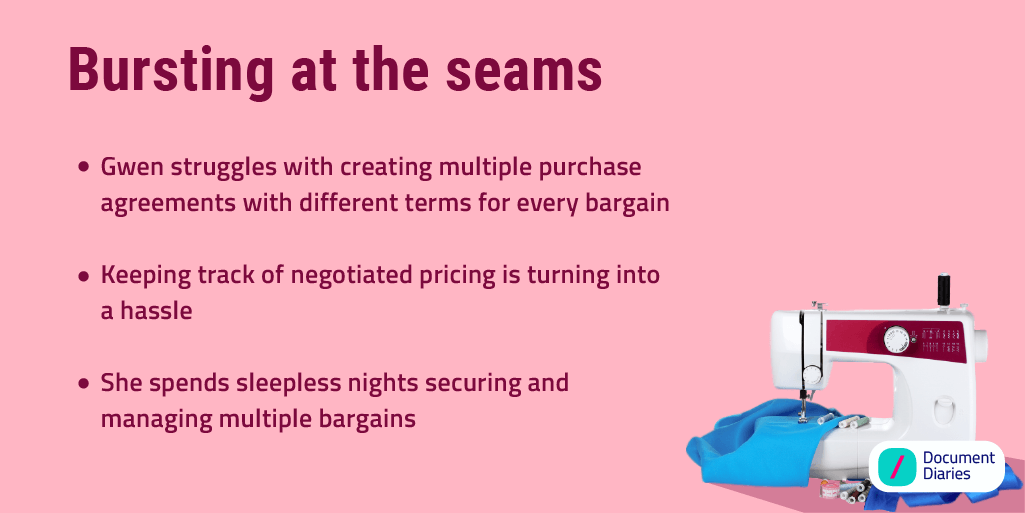
While a purchase agreement can have terms adhering to the local legislation of the company, Ms. Jones is concerned about other significant challenges.
What are the components that you should consider when creating a purchase agreement?
Ms. Jones is aware of the consequence of a loosely-worded purchase agreement. She takes extra care to capture the following elements in her documentation before sending it out for approval. As she creates every document from scratch, she also has to check the formatting and other key details before sharing the document with the suppliers.
- Information on the type of goods/products involved: The document should clearly state the product’s legal description. In the case of immovable objects, the description should mention the age, type, and details about its present conditions.
- Provisions for amendments or revisions: The buyer and seller can choose to add provisions that will enable them to make necessary changes to the agreement depending on various scenarios. These scenarios and criteria should be stated clearly. Also, the extent of changes that are acceptable must be mentioned in the document.
- Terms of delivery & shipping (if applicable): For movable products, the terms and conditions on the packaging, shipping, and delivery should be laid out precisely.
- Agreed price (gross & net) and earnest money: The purchase agreement should state the offered price accepted by the seller and the means by which it will be furnished. It also includes the earnest money, which is used to confirm the contract.
- Quantity and cost details: Along with the details on the price and quality, it is also important to include the details on quantity and all types of expenses.
- Start and closing dates: The dates of starting and fulfilling the entire purchase exercise should be included in the agreement and the stipulation that any changes in closing must be agreed to in writing.
- Enforcement and dispute resolution: The ability to make and enforce the contract and resolve disputes is fundamental to a legally binding contract like a purchase agreement and must be included.
- Expiration date: Both the buyer and seller should know when the agreement will expire if not accepted. The date should be outlined clearly in the contract. This is to protect the party’s interest that is making the offer, allowing it to withdraw after having provided the notice.
How are you managing your current documentation?
When it comes to purchase agreements, Ms. Jones is stuck with the outdated method of editing, printing, and getting them signed manually. She then makes multiple copies and stores the original agreement in the filing cabinet. Even the copying of information from emails and messages is done manually. It also includes multiple calls between her team and the purveyors, which ends up lengthening the processing time exponentially.
Here’s how she finally got it right with Revv –
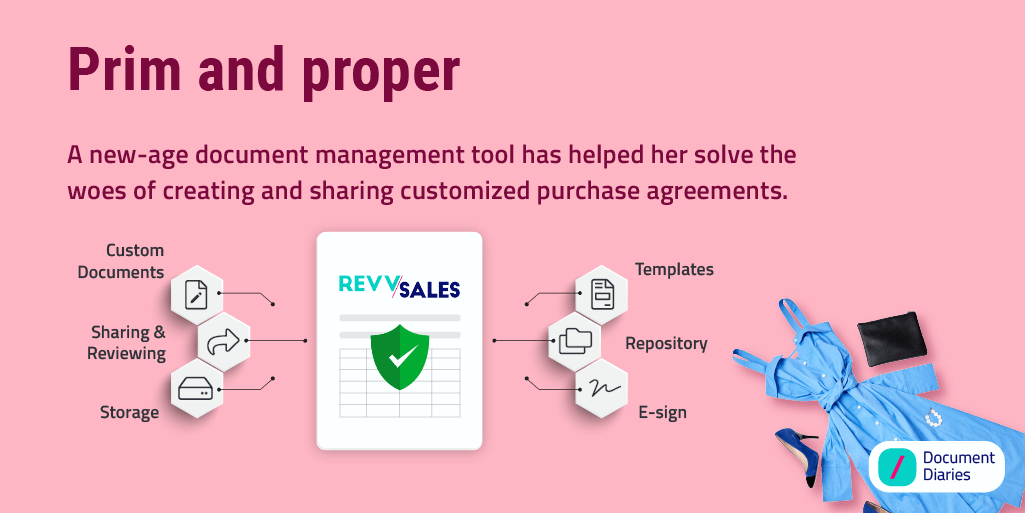
With a document management tool, she has gone about reviving the entire procurement process at her company. Her new ways involve –
- Choosing the template for the purchase agreement from Revv’s repository
- Editing and personalizing the document for a specific purchase and from a specific supplier – the easy-to-use editor makes it a breeze
- Use the spreadsheet integration tool to update the price and quantity components. She can link Google sheets to bring in the tables directly into the document
- Send for approvals from the higher-authority
- Once approved, send for e-signature to the purveyors via automated emails
- Track the activity on the document via the Activity and Status bar. This gives her the overview of the bottlenecks, along with the real-time info on email opens, e-sign done or rejected right from the document itself
- Store the signed document in a centralized repository for future updates, reviews, and reference
- Send it across to the finance and accounting department for payment fulfillment
The Revv way
The decision to invest in the document management tool has rewarded Ms. Jones with multiple benefits. She is now able to draft and share multiple purchase agreements with ease. The safe and easy e-signature has made the enormous task of ratification a matter of a few clicks. She can now secure all her documents in one place, which has significantly reduced access and retrieval time. Furthermore, the centralized repository enables her team to be better prepared for audits and monthly reviews.
Want to minimize your effort in drafting a comprehensive purchase agreement? Check out our templates here.
Find out how Revv can help you manage your procurement documents. Click here to try out the app today.

Want to take the hard work out of drafting agreements? Try Revv’s agreement templates

